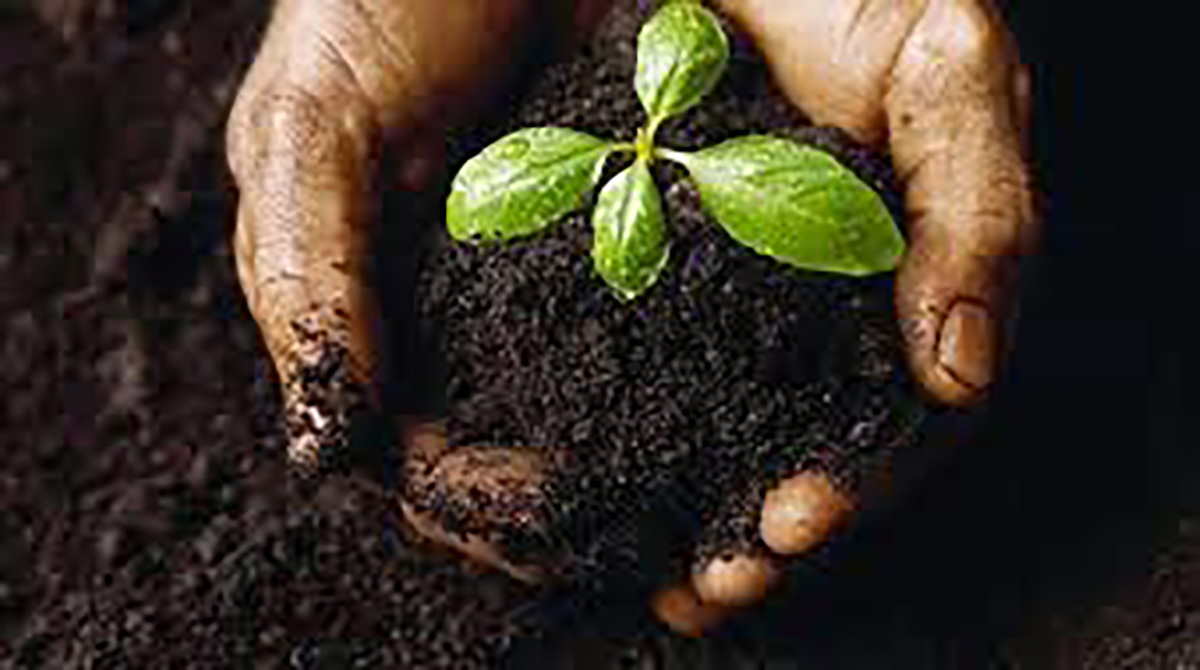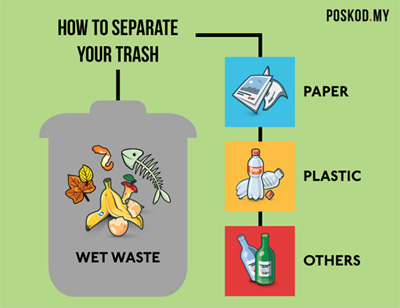Segregation ‘Is’ The Way Towards Better Waste Management
By : Upma Gupta

We can do this at home

Waste segregation is not a rocket science. There are two words – Waste and Segregation. Waste means anything which is of no use to us and we want to get rid of it while segregation means separating.
Waste segregation is whatever we discard, has to be separated according to their properties e.g basic division into wet and dry. So far what we have seen in India, it is a common practice to throw wet and dry garbage together in one dustbin at home, further it goes in mixed form to dump sites. Garbage in mixed form is very difficult to separate at the dump sites, still poor rag pickers do this job to earn few pennies by segregating dry from wet which has some resale value.
Mixed Garbage is a problem for every rag picker. Companies involved in recycling need to do basic segregation at source (at time of discarding). It is now becoming more and more essential to look for methods by which the garbage load on the land can be reduced. It has been seen that at present segregation of waste at source level seems to be the best.
Segregation is an essential part in Waste Management as mixed garbage is making landfills toxic, due to which toxic gases are released in the atmosphere and underground water also gets toxic. By taking out segregation from Waste Management Plan we are left with just dumping mixed garbage at landfills. We can’t call this management in any way. Management means managing garbage properly so that it is not harmful to citizens.
Waste management is important because improperly stored garbage can cause health, safety and economic problems. To prevent damaging the Earth’s ecosystems and maintain a high quality of life for the planet’s inhabitants, humans must manage and store their waste efficiently and safely.
Urban areas produce more garbage than rural areas. Call it downside of living in cities there is a marked difference in garbage production in both. Blame it to new life styles, eating habits, use of plastic in daily life.
Waste can be segregated as
1. Biodegradable and
2. Non-biodegradable.
Biodegradable waste include organic waste, e.g. kitchen waste, vegetables, fruits, flowers, leaves from the garden, and paper.
Non-biodegradable waste can be further segregated into:
a) Recyclable waste – plastics, paper, glass, metal, etc.
b) Toxic waste – old medicines, paints, chemicals, bulbs, spray cans, fertilizer and pesticide containers, batteries, shoe polish.
c) Soiled – hospital waste such as cloth soiled with blood and other body fluids.
A Simple Picture on Waste Segregation

For all practical purposes and reality on ground, if we Indians just do basic segregation at source that will also be a big help in lessening burden on landfills. Nearly 20% of methane gas emissions in India is caused by landfills. You can imagine seriousness and why segregation is so Important.
Only segregated waste can produce Waste-to-Energy.
Easiest way of waste segregation at source is to have two-coloured dustbins – one green for biodegradable waste and another for non biodegradable waste at home, school , market places , hospitals , offices.
Once garbage is segregated at source , dry waste can straightway go for recycling according to their respective character like paper, metal , batteries , plastics, glass etc . Wet waste can go for composting and if composting is not possible then our landfills should only take load of biodegradable waste which will eventually mix in soil and is non toxic.
While talking about waste segregation we can’t forget a very important feature in whole waste management scheme i.e. Rag pickers. Rag pickers contribute a great deal to waste management as they scavenge the recyclable matter thereby saving the municipality of the cost and time of collecting and transporting this to the dumps.
A rag picker has a special role to play in the segregation of waste in India. He sells all the material he picks to the whole sellers and retailers who in turn sell it to the industry that uses this waste matter as raw material. The main items of collection are plastics, paper, bottles, and cans.
Segregated Waste is a little help towards rag pickers who will not waste energy and time in scavenging for useful resalable? Recyclable garbage.
What Govt can do?
1. Encourage manufacturing of biodegradable bags for disposing wet waste.
2. Make councilors of municipalities connect with citizens and let them campaign about waste segregation.
3. Make sure that municipalities don’t mix wet and dry waste after collecting from source.
4. Involve rag pickers in a more organized way. Make it an employment opportunity for these underprivileged poor segment of society .
5. Involve voluntary organizations along with Municipalities.
6. Organize workshops and train Municipality staff that is involved in garbage collection.
7. With current situation in country a separate minister should be appointed for Waste Management with clear Duties and Agenda.
8. Ban use of plastics , ban use of plastics that are difficult to segregate like plastic straws, plastic, spoons and forks. Even if need arises to use plastic bags adopt two colour bags Blue and Green .
9. Promote disposable plates, cups, glasses made up of biodegradable material.
10. Ban disposable plates
Aware Citizens will make India a better place than it was and leave behind a glorious India for coming generations .
By – Upma Gupta
Posted on June 30, 2017